Delidding The AMD Ryzen 5 2400G APU: How To Guide and Results
by Gavin Bonshor on May 10, 2018 8:00 AM EST- Posted in
- CPUs
- Guides
- APUs
- Ryzen
- Ryzen 3 2200G
- Ryzen 5 2400G
- Delidding
- Delid
Delidding The AMD Ryzen 5 2400: Delidding The APU
To show if delidding the Ryzen 2000 series APUs yielded much benefit in terms of thermal performance and overclocking headroom, I selected the best overclocking chip for delidding from a CPU core frequency standpoint out of a pool of four APUs. The best one was our retail Ryzen 5 2400G chip, which managed 4.1 GHz with 1.387 volts applied in the BIOS (on our MSI B350I Pro AC motherboard).
Our Ryzen 2000 Series APU Overclocking Guide with results can be found here: link
For delidding, we purchased the Der8auer Delid Die Mate 2 delidding tool, and the Delid Die Mate 2 AMD Kit. This to our knowledge is the safest method to ensure the APU is not damaged during the delidding process and the Delid Die Mate 2 is manufactured from good quality anodized aluminum; much sturdier than a 3D printed acrylic one which relies on the quality of materials used to print. Ensuring the delidding process has minimal risks means a safe delid without damage which is ultimately is much cheaper than a dead piece of silicon, one which cannot be RMA’d due to voiding the warranty outright. The actual procedure for delidding the Ryzen 5 2400G ($169) is exactly identical to the Ryzen 3 2200G ($99) in every single way.
Step 1 – Ensuring the Tools Are Ready for the Job
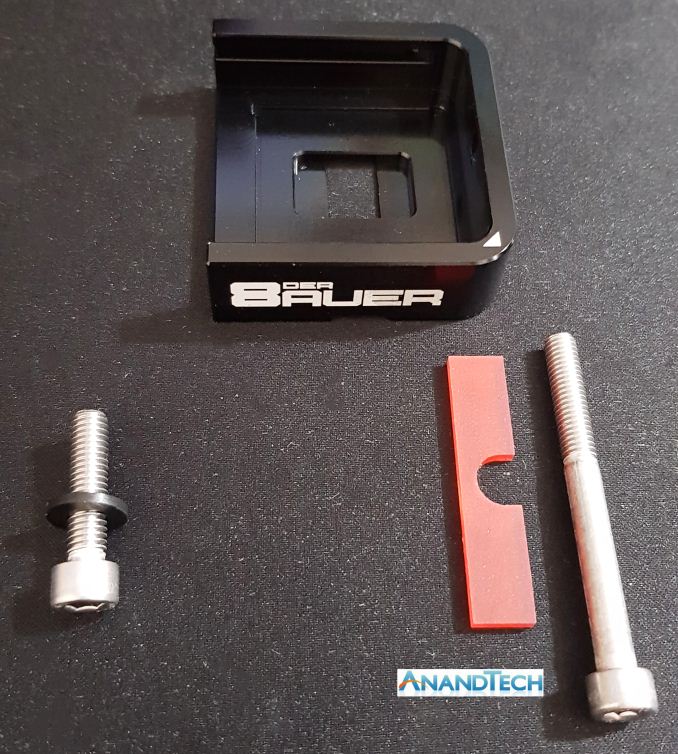
Standard bolt on the left with AMD Kit on the right
The process in removing the IHS from the 2400G die is very simple (using the right tools), although it can be daunting to first timers and non-experienced users. The first step is ensuring the tools contents are correct and there is no present damage to the components; doing this is essential as any imperfections or cracks in the metal could cause the tool to break in operation and could destroy the chip.
Step 2 – Putting the Chip in the Tool
Making sure the chip is placed into the tool the correct way allows the tool can do its job properly; putting a case fan the wrong way around in a chassis wouldn’t give the right thermal dynamics to effectively cool a system, doing the same with a processor in a delidding tool wouldn’t be right either.
The way to make sure the chip is in the correct way is to line up the triangle indicator on the corner of the processor itself with the triangle indicator on the tool, the same way you would when installing a processor into a motherboard.
Step 3 – Assembling the Die Mate 2 with the AMD Kit Correctly
With the Ryzen 3 2200G ($99) or Ryzen 5 2400G ($169) correctly placed in the Delid Die Mate 2 tool, the next step is slotting in the red acrylic adapter at the open end of the tool; the U-shaped groove needs to be facing upwards as this is where the threaded bolt sits to protect it from touching and potentially damaging the pins on the chip.
Step 4 – Slotting in The Delidder
The Der8auer Delid Die Mate 2 as standard comes in three main components, the part that holds the chip, the part that removes the IHS from the chip, and an adjustable clamp to hold the chip in place. The clamp isn’t used when delidding the AMD Ryzen 2000 series APUs due to the chip using pins. Lining up the grooves in the black block of aluminum with that of the other part of the tool is essential and for ease of use, it can only be placed in one particular way.
Step 5 – Inserting the Threaded Bolt from the Delid Die Mate 2 AMD Kit
This is where the included acrylic adapter comes to use to prevent the bolt from hitting any pins and thus avoiding damage. The M6 x 60 mm threaded bolt screw included in the AMD kit is paramount and using the regular one supplied with the tool itself wouldn’t be adequate to delid a Ryzen 2000 series APU. The aim is to secure the bolt into the correctly sized slot on the Delid Die Mate 2 tool so that it’s ready to be used.
Step 6 – The Nitty Gritty: Applying Force and Twisting the Nut
The Delid Die Mate 2 comes included with an Allen key which is required to screw the bolt with enough pressure to ‘pop’ the heat sink off safely. Both the standard supplied bolt and the one with the AMD kit share the same M6 sizing making the key usable on both threaded screws. With the bolt in place and the Ryzen 5 2400G ($169) safely installed into the tool, it’s a case of simply twisting the Allen key until the loud popping sound is heard.
Do not be alarmed however, the crunch or popping sound is rather loud and resembles the same kind of crunch when installing a new Intel processor into a new motherboard, only much, much louder.
Step 7 – Safely Removing the Screw from The Tool
Once the ‘hard’ part has been completed, removing the threaded screw safely is as important as it was installing. When removing the screw, it’s a good idea to angle the screw as in the image and ensure your have two hands available when removing the screw. The best way to achieve this is loosen the bolt by using the Allen key until it’s loose enough to screw by hands. The consequence of losing grip on the bolt while removing it could result in pin damage don’t want the end of the screw to scrape or even touch the pins.
Step 8 – Checking the Delid Was Successful
If all the steps have been followed correctly, the result should be a clear one, a freshly delidded Ryzen 3 2200G or Ryzen 5 2400G APU. With the aluminum Die Mate 2 block removed and the adapter, the chip itself should be loose from the IHS and should be ambulatory.
Now that the Ryzen 5 2400G has been successfully delidded without any damage, it’s now time to prepare it for use on the test bench to see what/if there are any thermal benefits, as well as available overclocking headroom as a result of this process.



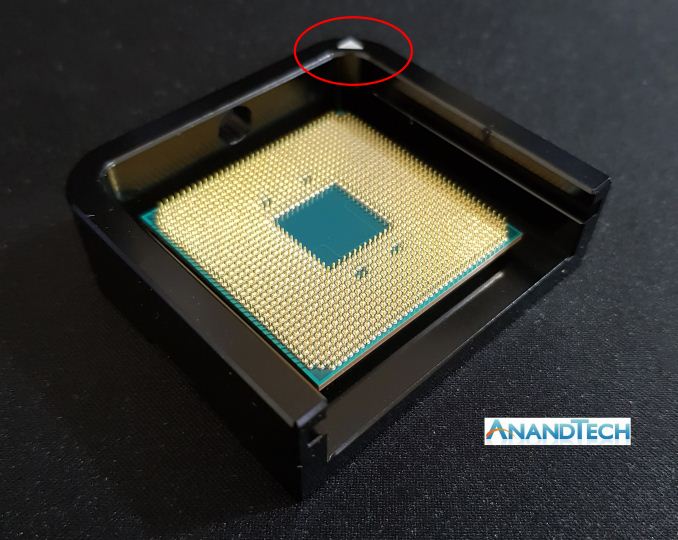
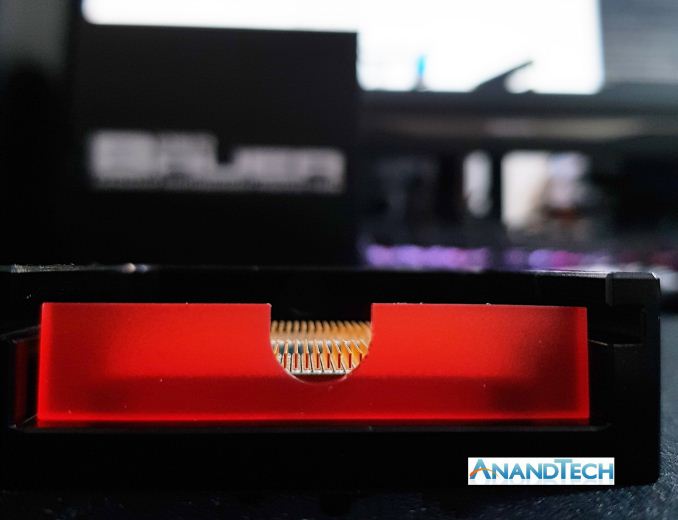
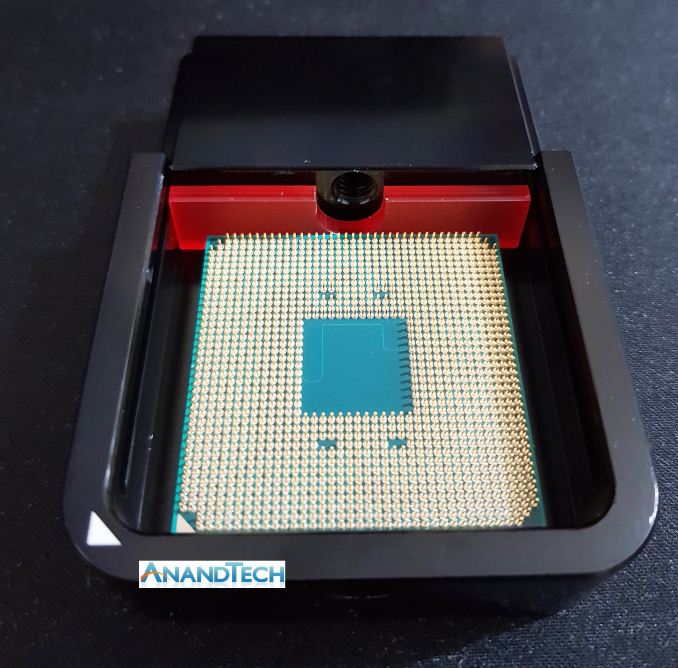
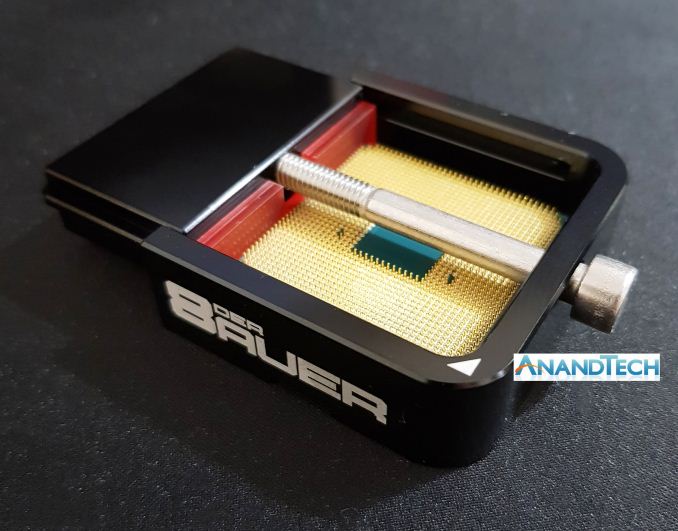
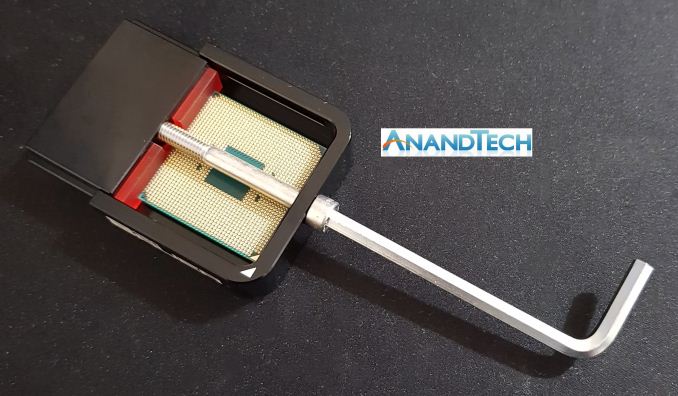
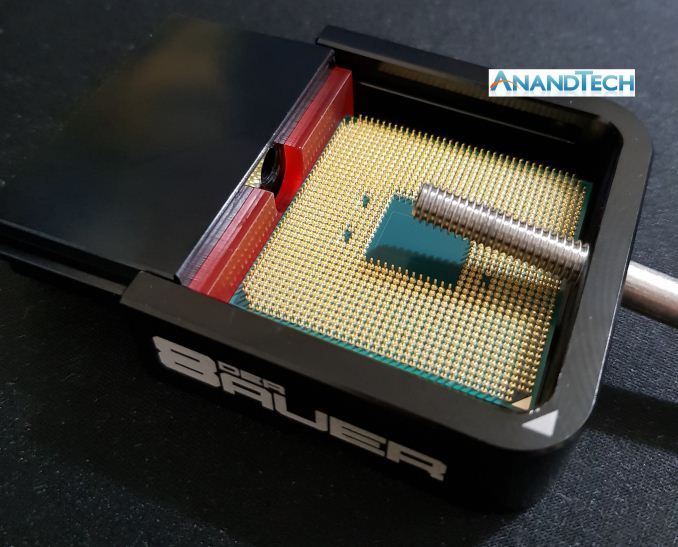
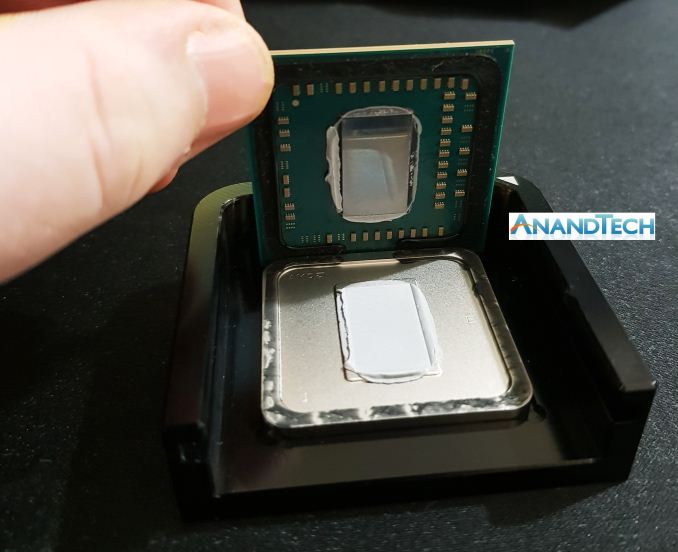








73 Comments
View All Comments
AntonErtl - Sunday, May 20, 2018 - link
About relidding vs. naked die. Looking at some other delidding articles, the reasons for relidding are related to the LGA sockets: the chip needs to be pressed on the springs for electrical contact (not just for good cooler contact; the mounting bracket of the LGA sockets is designed to press onto the heat spreader, and one has to find a replacement for that if the heat spreader is missing. Also, the mounting bracket is in the way of the usual coolers if you go for direct-die mounting, so you need to remove it, and replace it with something else.Antway, none of these problems is there for PGA sockets. I have recently looked at an AM4 CPU in its socket, and at least the cooler we use (Thermalright AXP-200R ROG) would not collide with the socket if mounted a little lower, and I guess this will be true for most other coolers. The only issue is that the mounting system would have to be adapted to mount the cooler that bit lower. The Thermalright AXP-200R uses a bracket that presses the cooler on the CPU; I would put something of the appropriate thickness between the bracket and the cooler.
Concerning the fear of breaking the die, I know of only one case of a broken die from the Athlon/Pentium III days: A friend of mine built his own water cooler, and when he was finished, he mounted it with a screwing mechanism. In the end, he wanted to give a screw another turn for good measure, but that was too much, and the Athlon broke. A case where the die survived was a cooler that was mounted in the wrong way, and sat one-sided on a Celeron. This was noticed because the Celeron was very slow, thanks to thermal throttling.
Concerning whether it pays off: It seems obvious to me that one would do that with a Ryzen G not as a particularly cost-effective way to get more performance, but because one wants to play around with delidding and other exotic cooling techniques. And in that context, a Ryzen G is a not-too-expensive playground.
ballsystemlord - Wednesday, May 23, 2018 - link
Here a a bunch of corrections to your spellllling grammar."and the Delid Die Mate 2 AMD Kit. This to our knowledge is"
An introductory clause needs comas.
"and the Delid Die Mate 2 AMD Kit. This, to our knowledge, is"
"Making sure the chip is placed into the tool the correct way allows
the tool can do its job properly; putting a case fan the wrong way"
Wrong word. Substitute "to" in place of "can".
"Making sure the chip is placed into the tool the correct way allows
the tool to do its job properly; putting a case fan the wrong way"
"between the die and IHS. One wrong jerk could or misplacement could get"
Double "could".
"between the die and IHS. One wrong jerk or misplacement could get"
Thanks!
Bill.Amd - Saturday, September 22, 2018 - link
Please go Extreme.What is the point of adding liquid metal on the cpu core when deliding you can remove a hole layer og TIM?
Over the past years I have delided many K8 and K10 AMDs and adddind a copper thermaltake volcano just on the cpu core the results were impressive. Great overclocking ability and at lowest fan speeds.
You have a AIO watercooler and removed the amd retaining base. The AIO waterblock has a copper base. I would like to see it attached directly on the cpu core.
And I would like to see something I never had the chance to test.. Water flowing directly around the cpu core! I had never the chance to make such a container but the results would be interesting for sure..
Please go EXTREME!